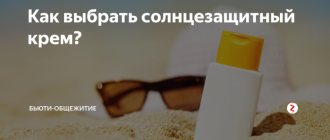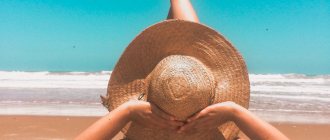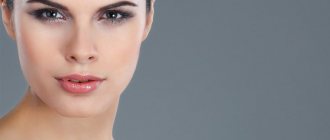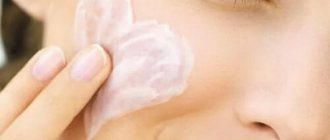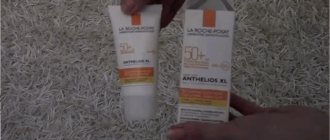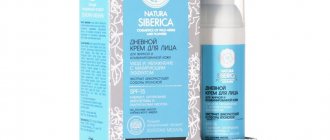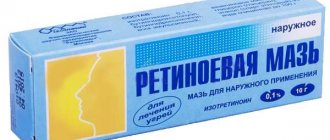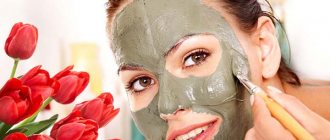PPD and SPF: what's the difference?
There are 3 types of ultraviolet radiation:
- UVC - these short-wave rays are the most dangerous, but, fortunately, they are mostly blocked by the ozone layer and do not reach the earth's surface.
- UVB is medium wave rays that affect only the upper layers of the skin. They are the ones that cause redness and burns after tanning in the sun or in a solarium, and can also cause cancer.
- UVA - long-wave rays that penetrate into the deep layers of the skin, stimulate the production of melanin (the pigment that produces tanning). A-spectrum radiation is a factor that provokes early aging and increases the risk of developing cancer.
Type A and type B rays affect the skin differently
All sunscreens can be divided into 2 categories:
- those that protect only from type B rays;
- those that protect from both A- and B-radiation.
The SPF (Sun Protection Factor) factor provides protection against B-spectrum rays, and the PPD (Persistent Pigment Darkening) factor provides protection against type A radiation.
According to cosmetologists, a good sunscreen should provide protection against rays of both spectrums, that is, in addition to SPF, it should also contain a PPD factor. The use of such products is recommended for everyone who is responsible for their health.
Dermatologists and cosmetologists note that no sunscreen can provide one hundred percent protection from UV exposure. Therefore, it is recommended to remember other precautions: light-colored clothes made of natural materials that hide the body, caps and hats with wide brims, sunglasses, tanning only at safe times (before 10–11 am or after 16–17 pm).
Who needs it?
Everyone. Regardless of gender, age, skin type, sexual orientation and religion. And this is no joke - the sun, from a medical point of view, is not a friendly luminary, but a very aggressive star. Ultraviolet rays pose a real danger to health: they lead to premature aging of the skin (photoaging), its pigmentation, cause sunburn, and also provoke skin cancer.
Many people prefer to think that this is a myth. But the statistics are inexorable. In the Novosibirsk region, this diagnosis ranks first among all types of oncology. And this despite the fact that we live in Siberia, where the number of sunny days a year is not so great.
How to find out if a product has PPD factor
Not all products containing the PPD factor will have such a label on the packaging. The fact is that this is an indicator of “internal use”, which is necessary for manufacturers to assess product compliance with standards. It is only important for consumers to know that the product provides protection against broad spectrum rays (A and B). Therefore, we can say with confidence that a product contains PPD if the package contains:
- UVA icon in a circle - this marking means that the product has a safe PPD level recommended by dermatologists;
- abbreviation PA with plus signs - usually used on Asian-made products to indicate the degree of UVA protection;
- Marking “broad spectrum of protection”, broad spectrum or UVA/UVB - such an inscription can only be on products that have successfully passed special studies on the effectiveness of protection against UVA and UVB.
I was puzzled by the search for sunscreens with PPD. I went around everything, well, no... All creams say UVA+UVB. As a result, what I see is UVA=PPD. That is, it turns out that this entire advertising campaign launched on TV, is this just another scam??? As far as I understand, ultraviolet rays are divided into rays of spectra A, B, C. A - penetrates deep into the skin and can cause cancer, B - affects the skin externally (tanning, aging) C - I actually don’t know or know anything about it Is there any protection against it and is it necessary... PPD is precisely responsible for protection against spectrum A rays.
Victoria
https://www.babyblog.ru/community/post/perambulator/1755787
Photo gallery: what the product packaging with PPD looks like
Most often, PPD is indicated as UVA, circled
If the packaging is labeled UVB/UVA, the product also contains PPD
On products of Asian origin, PPD is abbreviated PA
Video: how to “decipher” a sunscreen label
What about tanning?
It is not advisable to use such means at all. Even if you never get sunburned. Even if you apply extra sunscreen. The product is called “tanning” because it can enhance the effect of the sun’s rays. This increases skin pigmentation, which will result in the formation of age spots, dryness and health problems.
And the opinion that sunscreen also protects against tanning is called a myth by doctors. “There is a misconception that if you use sunscreen you won't tan. No and no again! You will have a tan that is beautiful, even and, more importantly, healthy,” says Shevchenko.
What should the PPD level be?
According to European standards, the PPD level must be at least 1/3 of the SPF level. A value of 8 or higher is considered safe, so a good broad-spectrum protection product has an SPF of at least 30.
Typically, the PPD value is not indicated on the packaging and by default is approximately 1/3 of the SPF level.
Table: PA PPD Compliance
| PA | PPD |
| PA+ | 2–4 |
| PA++ | 4–8 |
| PA+++ | 8–16 |
| PA++++ | more than 16 |
The maximum PPD that scientists were able to create is 42. A factor of 8 or higher is considered safe. But the main thing in the cream is not even this, but the ratio of SPF and PPD levels. It should tend to 2.5 or 3, then on the packaging you can see the marking UVA or broad spectrum - “broad spectrum of radiation”.
Elena Eliseeva, medical expert at Vichy
https://skin.ru/article/rasshifrovka-chto-takoe-spf-i-ppd-v-solncezashhitnyh-kremah/#406_6
Review of popular sunscreens with PPD
Based on consumer reviews, information from manufacturers and online stores selling sunscreens with PPD, we have compiled a review of the most popular products.
You can buy products with PPD at a pharmacy, cosmetics department or online store.
Badger Company, Zinc Oxide Sunscreen Cream, SPF 30
The presence of PPD is indicated by the broad spectrum marking. It is valued by consumers for its natural composition (98% comes from organic ingredients). The description indicates PA+++, that is, PPD is approximately 8–16, that is, approximately 1/3 of the stated SPF 30. Disadvantage: leaves whitish streaks on the skin.
Badger Company, Zinc Oxide Sunscreen Cream is valued for its natural composition
Active ingredients: zinc oxide, sunflower seed oil, beeswax, vitamin E, sea buckthorn extract.
The approximate cost for 2020 is 1050 rubles.
La Roche-Posay, Anthelios XL, SPF 50+/PPD 42
An ultra-light facial fluid that is suitable even for allergy-prone and sensitive skin. The special formula remains active when in water for 40 minutes.
Among the advantages, consumers note convenient application, lack of greasy shine, good sun protection and economical consumption. Among the disadvantages are “whitening” of the skin and stains after application, which have to be carefully shaded.
La Roche-Posay, Anthelios XL, SPF 50+/PPD 42 contains the highest level of protection against type A rays currently possible
Active ingredients: broad spectrum ray filters, thermal water.
The approximate cost for 2020 is 1,700 rubles.
I bought La Roche Posay sunscreen at the pharmacy. The main selection criterion was this: a high level of SPF protection and definitely PPD. Since I live in the middle zone, and I walk with my child from 1 to 3 hours, I bought SPF 30, not 50. I have combination skin, and many protective creams are oily, so I decided to take the option for oily skin, so as not to get an unpleasant shine There really was no shine from it. It even dried out my skin a little. The biggest surprise was that it whitens the skin. Moreover, it is quite difficult to apply evenly; you have to carefully shade it. Otherwise, you can walk striped. This is a huge minus because of which I will not buy it again. The texture of the cream is liquid, you definitely need to shake it. It lasts a long time. The bottle didn't run out over the summer.
ayguli
https://irecommend.ru/content/krem-s-zashchitoi-spf-i-ppd-vybelivinie-v-odnom-flakone
Vichy, Capital Ideal Soleil, SPF 50+
The product provides protection against broad spectrum rays, and also evens out the complexion and blocks the pigmentation process. Has a mattifying effect, leaving a powdery effect. Some users note the following disadvantages: “streaking” when applied, unpleasant odor, and if you sweat excessively, you have to renew it frequently.
Vichy product leaves a powdery effect on the skin
Active ingredients: filters from rays A and B, hyaluronic acid, vitamin E, licorice root and ginger root extract, thermal water.
The approximate cost for 2020 is 1300 rubles.
SkinCeuticals, Brightening UV Defense, SPF 30
Fights excessive pigmentation and provides good hydration. It has a pleasant smell and light texture. Some users report an oily shine after using the product, which even powder does not hide.
SkinCeuticals, Brightening UV Defense can be used as a quality makeup base
Active ingredients: sun filters, HYPERBRIGHT complex (reduces excess pigmentation).
The approximate cost for 2020 is 2200 rubles.
Kiehl's, Activated Sun Protector For Face, SPF 50
Facial lotion with broad-spectrum sun protection properties. Waterproof, non-greasy texture, suitable for use on the beach. Convenient packaging, economical consumption. Does not contain silicones, parabens, fragrances or oils. Among the disadvantages, it is noted that the cream leaves a greasy film on the skin and in hot weather this creates some discomfort.
Kiehl's, Activated Sun Protector For Face is free of silicones and parabens
Active ingredients: sunscreens, stearic acid, linalool, coumarin.
The approximate cost for 2020 is 2200 rubles.
Garnier, Ambre Solaire “Expert Protection”, SPF 50
Suitable for sensitive skin of the face and body thanks to the hypoallergenic formula. It is quickly absorbed, does not leave the feeling of a greasy film, and is consumed economically. Among the disadvantages, consumers note that the texture is too dense, an unpleasant odor, “whitening” of the face, and the rapid appearance of an oily sheen.
Garnier, Ambre Solaire impresses with its affordable price, but has an unpleasant odor and “whitens” the face
Active ingredients: sunscreens, vitamin E.
The approximate cost for 2020 is 750 rubles.
Jan Marini, Skin Research Antioxidant Daily Face Protectant
The product is quickly absorbed and waterproof. Does not leave a greasy film, controls sebum secretion, and provides a moisturizing effect. Among the disadvantages is the high cost of the product.
Antioxidant Daily Face Protectant provides good moisturizing effect
Active ingredients: sunscreen filters, hyaluronic acid, glycerin, photomelanin extract.
The approximate cost for 2020 is 3,500 rubles.
Obagi Nu-Derm Healthy Skin Protection SPF 35
Can be used as a base for makeup; the oily shine that remains after application quickly disappears. Comfortable for dry and normal skin. Those with oily epidermis consider the disadvantages to be that the texture is too dense and note that the product can clog pores.
Obagi Nu-Derm Healthy Skin Protection SPF 35 May Clog Pores
Active ingredients: sun filters.
The approximate cost for 2020 is 3,000 rubles.
Clinique, Super City Block Oil-Free Daily Face Protector SPF 40
Applies evenly, does not clog pores, is long-lasting, suitable for those who play sports outdoors. Most reviews about the cream are positive, users note the following advantages: light texture, pleasant smell, effectiveness, economical, works well as a base for makeup. However, it may not protect against increased pigmentation if there is a tendency to it.
The product from Clinique has earned a lot of positive reviews
Active ingredients: sunscreens, vitamins E and C, rosemary, kelp and gentian extracts, quartz, bisabolol.
The approximate cost for 2020 is 2000 rubles.
I use this cream in the summer instead of regular foundation, even the smell is not irritating and I like the consistency.
Green T
https://www.rutalk.co.uk/archive/index.php/t-105676.html
Shiseido, Ultimate Sun Protection Cream SPF 55 PA+++
The cream is stable, works well in water and under cosmetics, and does not leave white streaks on the skin. Thanks to its loose consistency, it applies well and is quickly absorbed.
Thanks to its successful texture and durability, Shiseido's product is appreciated by consumers
Active ingredients: sunscreens, stearic acid, linalool, plant extracts.
The approximate cost for 2020 is 2,700 rubles.
